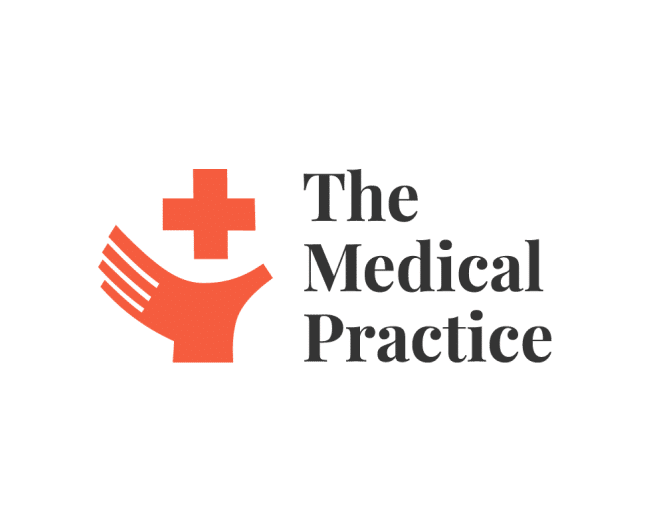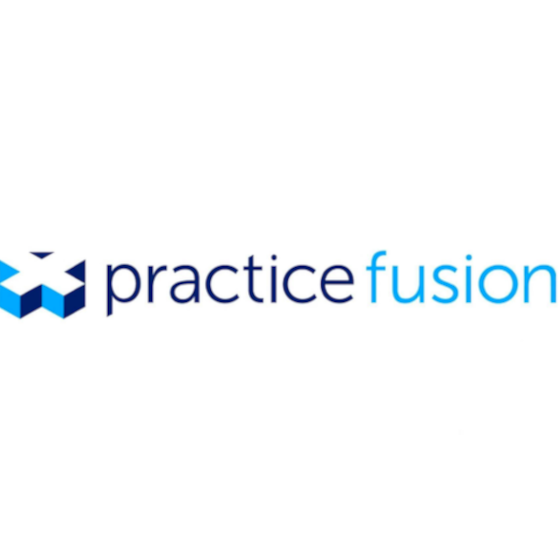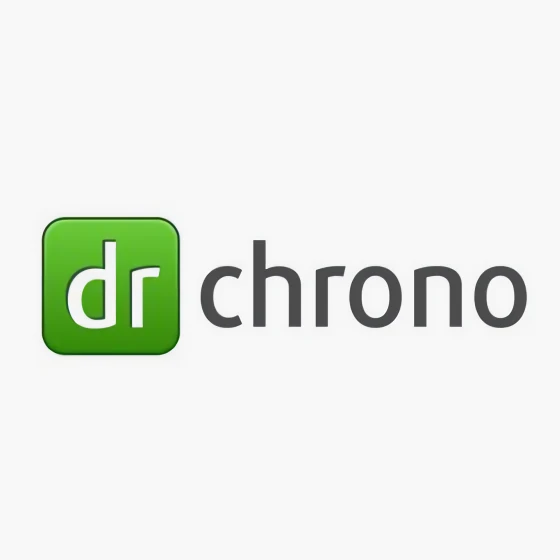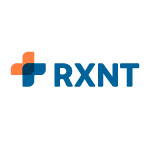10 Best e-Prescribing Software Shortlist
Here's my pick of the 10 best software from the 18 tools reviewed.
Our one-on-one guidance will help you find the perfect fit.
Understanding the challenges of managing a legal practice, especially in a world rapidly shifting towards telemedicine, is crucial. I've come across a legal practice management software that does an impressive job of addressing these challenges. This software is particularly adept at handling matters related to controlled substances, streamlining electronic prescriptions, and promoting the secure implementation of electronic prescribing (EPCS).
In a nutshell, this tool seamlessly integrates the management of legal aspects in the telemedicine industry, addressing areas such as controlled substances regulation, and facilitating the electronic prescriptions process. So, let's take a step in the right direction and explore these options together. They might just be the solution we've been looking for.
What Is e-Prescribing Software?
e-Prescribing (eRx) software is a digital tool designed to streamline the prescription management process in healthcare. Typically utilized by physicians, nurses, and other healthcare providers, it enables them to send prescriptions directly from the point of care to a patient's pharmacy.
Its functionality extends to maintaining patient medication history, checking for drug-drug and prescription drug-allergy interactions, and accessing formulary information, thereby improving accuracy and enhancing patient safety. T
The use of such software is instrumental in addressing the traditional challenges of paper prescriptions, like illegible handwriting and manual errors, while facilitating better coordination among healthcare organizations.
Best e-Prescribing Software Summary
| Tool | Best For | Trial Info | Price | ||
|---|---|---|---|---|---|
| 1 | Best for secure prescription transmission | Free demo available | Pricing upon request | Website | |
| 2 | Best for its cloud-based e-prescribing capabilities | Not available | From $149/user/month (billed annually) | Website | |
| 3 | Best for mobile e-prescribing using iOS devices | Free demo available | From $199/user/month (billed annually) | Website | |
| 4 | Best for integrated decision support tools | Not available | Pricing upon request. | Website | |
| 5 | Best for its robust e-prescribing module | Not available | Pricing upon request | Website | |
| 6 | Best for real-time prescription benefit checks | Not available | From $199/user/month | Website | |
| 7 | Best for seamless patient charting integration | Not available | From $200/user/month. | Website | |
| 8 | Best for user-friendly navigation and interface | Not available | From $160/user/month (billed annually) | Website | |
| 9 | Best for enhancing clinical workflow efficiency | Not available | Pricing upon request. | Website | |
| 10 | Best for comprehensive healthcare management solutions | Not available | From $429/user/month | Website |
Best e-Prescribing Software Reviews
Athenahealth is a highly effective e-prescribing software that enhances the prescribing process through a variety of features. It allows healthcare providers to manage electronic prescriptions, reducing errors and improving efficiency by sending prescriptions directly to pharmacies. The software integrates with electronic health records (EHR), providing easy access to patient information and medication history, while real-time medication interaction checks ensure patient safety.
Why I Picked Athenahealth: Athenahealth's e-prescribing software, part of the athenaOne suite, stands out due to its comprehensive features and user-centric design. One of the key features is its integration with Surescripts, a national e-prescribing network, which ensures secure transmission of prescriptions to pharmacies. This integration significantly reduces prescription errors and enhances patient safety by providing real-time access to patient medication histories and potential drug interactions. Another notable benefit of Athenahealth's e-prescribing software is its ability to enhance clinical decision-making through real-time data integration and actionable insights.
Standout features & integrations:
Athenahealth's athenaOne platform offers a highly customizable Electronic Health Record (EHR) system that streamlines documentation and enhances patient interactions which allows clinicians to document patient encounters on the go, using customized templates and macros. In terms of integrations, the system interfaces smoothly with various medical devices and health platforms, including ECG, Holter, spirometry, and stress testing equipment, as well as patient engagement solutions.
Pros and cons
Pros:
- Extensive integration options
- Customizable templates for various medical specialties
- Multi-location friendly cloud-based system
Cons:
- Extensive features may require a slight learning curve
- Considered more expensive compared to some competitors
Practice Fusion is a robust, cloud-based e-prescribing software that is designed to improve the efficiency and accuracy of the prescription process. It stands out for its exceptional cloud capabilities, making it ideal for those in search of a dependable and accessible e-prescribing solution.
Why I Picked Practice Fusion: I chose Practice Fusion primarily because of its strong cloud-based infrastructure. It stood out from the rest because of its ability to securely store and manage patient prescription data on the cloud, making it easily accessible for health practitioners from anywhere. This particular cloud-based feature puts it on top for healthcare providers looking for highly accessible e-prescribing solutions.
Standout Features & Integrations:
Practice Fusion's key features include real-time drug interaction checks, electronic prior authorization, and detailed prescription history, all seamlessly working within a cloud environment. The software also integrates smoothly with numerous third-party platforms, including leading pharmacy systems and lab services.
Pros and cons
Pros:
- Real-time drug interaction checks
- Wide range of integrations
- Excellent cloud-based e-prescribing capabilities
Cons:
- Some users have mentioned occasional slow load times
- Learning curve for some users due to its extensive feature set
- Pricier than some other solutions
drChrono is an Electronic Health Records (EHR) software that capitalizes on the mobility and convenience of iOS devices. It offers a range of medical practice management features but stands out primarily for its e-prescribing module, which works exceptionally well on mobile app platforms, hence it is 'Best for mobile e-prescribing using iOS devices'.
Why I Picked drChrono: When I was selecting tools for this list, I was particularly impressed by drChrono's emphasis on mobility. Its e-prescribing module, designed for iOS devices, sets it apart from others. This ability to manage prescriptions on the go led me to judge it as the optimal choice for healthcare providers who rely on iPad, iPhone or Apple devices.
Standout Features & Integrations:
Noteworthy features of drChrono include its mobile EHR, practice management software, and medical billing services. But its e-prescribing module, designed with iOS device functionality in mind, is a standout. The tool also integrates seamlessly with laboratories like LabCorp and Quest, and pharmacies, thereby improving the prescription and diagnostic processes.
Pros and cons
Pros:
- Comprehensive practice management software
- Seamless integration with labs and pharmacies
- Exceptional mobile e-prescribing features for iOS devices
Cons:
- Some users report customer service could be improved
- Exclusively designed for iOS, limiting use for other OS users
- Higher price point can be a barrier for small practices
NewCrop is a potent e-prescribing platform known for its advanced decision-support capabilities. The software intelligently informs healthcare providers, including pharmacists, about potential drug-drug or drug-allergy interactions, confirming its strength in integrated decision-support tools.
Why I Picked NewCrop: I chose NewCrop due to its strong emphasis on decision support, a crucial feature in e-prescribing. Its exceptional ability to provide real-time interaction checks makes it an essential tool for healthcare providers, validating its position as the 'best for' integrated decision support tool.
Standout Features & Integrations:
NewCrop provides an array of impressive features such as real-time medication history, comprehensive allergy checks, and automatic drug-drug interaction warnings. It even offers built-in e-Labs and e-Referrals, further enriching its functionalities. Regarding integrations, NewCrop connects effectively with numerous EHRs and practice management systems, making it a versatile choice for different healthcare environments.
Pros and cons
Pros:
- Interoperability with multiple EHRs and practice management systems
- Offers additional e-Labs and e-Referrals features
- Integrated decision support tools
Cons:
- Setup and learning curve can be steep for some users
- User interface may appear outdated to some users
- Pricing details are not openly available
ChartLogic is an Electronic Health Record (EHR) software platform that offers advanced medical charting and practice management tools. Its strength lies in its e-prescribing module, which simplifies the process of prescribing medications and ensures secure transmission to pharmacies.
Why I Picked ChartLogic: I chose ChartLogic because of its powerful e-prescribing module. The ability to handle prescriptions efficiently and securely sets this platform apart from many others. For its robust and reliable e-prescribing capabilities, I see ChartLogic as the best fit for this use case.
Standout Features & Integrations:
The primary features of ChartLogic include detailed electronic medical records, patient portal, and revenue cycle management. Additionally, its robust e-prescribing module stands out for its effectiveness. ChartLogic integrates seamlessly with practice management systems and other healthcare databases, providing a more comprehensive view of patient information.
Pros and cons
Pros:
- Seamless integration with practice management systems
- Detailed electronic medical records
- Robust e-prescribing module
Cons:
- Limited customization options
- Might require a learning curve for full utilization of features
- Pricing might be steep for smaller practices
Meditab is a sophisticated e-prescribing solution that enables healthcare providers to make informed decisions on prescriptions. With a keen focus on providing real-time prescription benefit checks, it stands as the best choice for this specific need.
Why I Picked Meditab: I selected Meditab for its unique focus on providing real-time prescription benefit checks, a feature that makes it distinct in the e-prescribing software landscape. This feature, coupled with an array of other functionalities, makes it the best tool for those needing immediate, real-time checks of prescription benefits.
Standout Features & Integrations:
Meditab comes with several notable features like electronic prior authorization, medication adherence tracking, and, most importantly, real-time prescription benefit checks. It also integrates well with a variety of EHR systems and patient portals, making it adaptable to diverse healthcare settings.
Pros and cons
Pros:
- Comprehensive feature set for e-prescribing
- Extensive integration capabilities
- Real-time prescription benefit checks
Cons:
- Customer support may be inconsistent, according to some users
- Can be complex to navigate for new users
- Steeper pricing compared to some competitors
Elation Health is an innovative electronic health record (EHR) software that emphasizes facilitating charting and messaging between healthcare providers and patients. Its proficiency in integrating patient charting makes it an optimal choice for healthcare professionals seeking efficiency in managing patient data.
Why I Picked Elation Health: In my evaluation, I picked Elation Health due to its integrated patient charting capabilities. This differentiates it from other EHR tools, as it provides a streamlined way for healthcare providers to manage patient data. These capabilities make it the best choice for professionals looking to optimize their patient charting process.
Standout Features & Integrations:
Elation Health offers a Clinical First EHR that enables physicians to focus on their patients rather than paperwork. It also offers the Elation Passport for patients to access their medical records securely. Moreover, it integrates with billing, reporting, and population health management tools.
Pros and cons
Pros:
- Strong interoperability with other tools
- Secure patient access to medical records
- Comprehensive patient charting integration
Cons:
- The cost might be prohibitive for smaller practices
- It may require a learning curve for non-tech savvy users
- Higher cost compared to other solutions
Kareo Clinical is an Electronic Health Records (EHR) system designed with an emphasis on ease of use and intuitive navigation. It aims to streamline the workflow of healthcare providers, with a user interface that allows easy access to necessary information, earning it the title of 'Best for user-friendly navigation and interface'.
Why I Picked Kareo Clinical: I chose Kareo Clinical for this list due to its unique emphasis on a user-friendly interface. Compared to many other EHR systems, Kareo Clinical stands out due to the ease of navigation and simplicity it provides. Given these factors, I determined it to be the best choice for practices that value an easy-to-use, intuitive platform.
Standout Features & Integrations:
Kareo Clinical offers features such as patient records, scheduling, billing and collections, and analytics. Its e-prescribing and telehealth capabilities are particularly useful for modern practices. The system also integrates with numerous medical billing services and other EHR platforms, fostering an efficient and connected work environment.
Pros and cons
Pros:
- Telehealth capabilities
- Integration with various medical billing services
- User-friendly navigation and interface
Cons:
- The learning curve for some features
- Some users report occasional system slow-downs
- Pricing can be high for smaller practices
MicroMD is a leading e-prescribing solution aimed at automating and enhancing clinical workflows within healthcare practices. This tool excels in streamlining prescription processes, aligning it perfectly with its 'best for' designation of enhancing clinical workflow efficiency.
Why I Picked MicroMD: In my judgement, MicroMD stands out with its comprehensive functionalities specifically designed to enhance workflow efficiency. Its automatic medication reconciliation, refill requests, and quick access to patient medication history contribute to this tool being the 'best for' enhancing clinical workflow efficiency.
Standout Features & Integrations:
Key features of MicroMD include automatic refill requests, drug utilization reviews, and streamlined patient medication history access. These functionalities, combined, contribute significantly towards a more efficient workflow. When it comes to integrations, MicroMD provides seamless compatibility with a broad range of EHRs and practice management systems, thus promoting interoperability.
Pros and cons
Pros:
- Seamless compatibility with multiple EHRs and practice management systems
- Comprehensive set of features for e-prescribing
- Focused on enhancing clinical workflow efficiency
Cons:
- Customer service feedback varies among users
- Setup and user interface might be complex for some users
- Pricing information is not transparent
NextGen Healthcare is a robust Electronic Health Record (EHR) system that provides an array of features and services to assist healthcare practices manage their administrative and clinical processes effectively. Its strength rests in its capacity to deliver comprehensive healthcare management solutions, aiding practices to improve their operational efficiency.
Why I Picked NextGen Healthcare: In selecting tools for this list, I gravitated towards NextGen Healthcare because of its comprehensive approach to healthcare management. Compared to other EHR systems, its wide array of features provide a more inclusive and holistic solution for healthcare practices. Given these qualities, it stands out as the best for providing comprehensive healthcare management solutions.
Standout Features & Integrations:
NextGen Healthcare offers features like electronic health records, practice management, and patient portal among others. Its integrated analytics and reporting tools are particularly noteworthy, providing useful insights for healthcare practices. The platform integrates with various billing systems, lab systems, and other EHR systems, promoting data interchange and enhanced workflows.
Pros and cons
Pros:
- Seamless integration with various systems
- Robust analytics and reporting tools
- Comprehensive healthcare management solutions
Cons:
- Requires training for effective usage
- Some users may find the interface less intuitive
- Might be costly for smaller practices
Other e-Prescribing Software
Below is a list of additional legal practice management software that I shortlisted, but did not make it to the top 10. Definitely worth checking them out.
- Qualifacts Systems
For behavioral health professionals
- Accuro EMR
For Canadian healthcare practitioners
- CoverMyMeds
For streamlining medication prior authorizations
- Pabau
Good for cosmetic and aesthetic clinics
- CarePaths
Good for telehealth and e-therapy practices
- athenaOne
Good for all-in-one practice management
- Alleva
Good for specialized behavioral health centers
- Meddbase
Good for cloud-based medical management
Other Pharmacy Software Reviews
Selection Criteria
As an experienced professional who's personally tried and researched countless medical practice management software solutions, I've focused on a selection of criteria that matter most when choosing this type of software. I evaluated dozens of tools, but in this case, I was particularly interested in functionalities like the ease of appointment scheduling, comprehensive electronic health records (EHR), and efficient billing processes, which I'll delve into more detail about below.
Core Functionality
- Electronic Health Records (EHR): The software should allow you to securely store patient information, medical history, treatment plans, and notes.
- Appointment Scheduling: A robust scheduling feature should offer easy booking, rescheduling, and cancellation of appointments.
- Medical Billing: Essential for handling insurance claims, and patient invoices, and ensuring the financial health of the practice.
Key Features
- Customizable Templates: Customizable templates for EHR can help standardize information recording and save time.
- Interoperability: The software should be able to exchange and make use of information from other healthcare software like labs, pharmacies, and hospitals.
- Mobile Access: Given the on-the-go nature of healthcare professionals, mobile access can allow for real-time updates and remote access to crucial patient information.
- Compliance: The software should be HIPAA-compliant with healthcare laws and regulations, or PIPEDA in Canada.
Usability
- User-friendly Interface: Medical practice management software should have an intuitive interface that makes navigation simple, reducing the learning curve for new users.
- Quick Onboarding: Comprehensive tutorials and 24/7 customer support can assist in getting the team up and running swiftly.
- Role-Based Access: This allows for secure access to patient information, where staff members can access only the information they need to perform their roles.
- Robust Reporting: In-depth analytics and reports can help track the performance of the practice and inform decision-making.
People Also Ask (FAQs)
What are the benefits of using e-prescribing software?
E-prescribing software brings several advantages to medical practices:
- Improved Prescription Accuracy: By reducing handwritten prescriptions, these tools minimize errors due to illegible handwriting or misinterpretation.
- Enhanced Efficiency: E-prescribing software streamlines the prescription process, making it quicker and more efficient for both providers and patients.
- Reduced Medication Errors: These tools often have built-in checks for drug interactions and allergies, helping to prevent harmful medication errors.
- Real-Time Updates: E-prescribing software provides real-time updates on drug interactions, contraindications, and insurance formulary checks.
- Better Patient Compliance: Patients are more likely to fill prescriptions when they are sent electronically directly to their preferred pharmacy.
How much do e-prescribing software tools typically cost?
Pricing for e-prescribing software varies greatly depending on the features, the number of users, and the size of the practice.
What are the pricing models for e-prescribing software?
Most e-prescribing software providers follow a subscription-based pricing model, typically on a per-provider, per-month basis. Some also offer annual subscriptions, which can come at a discounted rate.
What is the typical range of pricing for e-prescribing software?
The cost of e-prescribing software can range anywhere from $30 to $500 per provider, per month. The price generally correlates with the complexity and comprehensiveness of the tool.
Which are the cheapest and most expensive e-prescribing software tools?
Among the tools I’ve reviewed, Practice Fusion and MDToolbox offer some of the most affordable solutions, starting at around $30 per provider, per month. On the higher end of the spectrum, tools like athenaOne can cost upwards of $300 per provider, per month.
Are there any free e-prescribing software options?
While truly free, fully functional e-prescribing software is quite rare, some providers do offer limited free versions or trial periods. It’s important to note that these versions often have restrictions on features and usage. For instance, they may lack advanced functionalities or limit the number of prescriptions that can be written per month.
Summary
In this guide, we delved into the world of e-prescribing software, bringing to light essential insights to aid in the decision-making process. The variety of options available can be overwhelming, but understanding your needs can significantly streamline the selection process.
- Core Functionality: In essence, the award-winning or best e-prescribing software will fulfill the specific needs of your healthcare practice, from managing patient records to tracking prescriptions and medication histories. It's about finding a tool that aligns with your specific workflow and boosts productivity.
- Usability and Interface: User-friendliness is paramount. A clean, intuitive interface saves time and makes tasks more manageable. Look for software with stellar customer support, as it is critical for troubleshooting and smooth onboarding.
- Budget Considerations: Price matters, and it's crucial to find a solution that offers value for money. Consider both upfront and hidden costs, and remember that an expensive solution isn't necessarily the best.
Keep these takeaways in mind as you navigate the realm of e-prescribing software. The right tool can revolutionize your practice, enhance patient care, and create efficiencies across the board.
What Do You Think?
Of course, the world of e-prescribing software is vast and continually evolving, and there's a chance I might have overlooked a few gems. If you've encountered a fantastic tool that I didn't mention here, please do not hesitate to share it. I appreciate your input and look forward to continuing the discussion about how to find the best e-prescribing software that meets the unique needs of various healthcare practices.

























